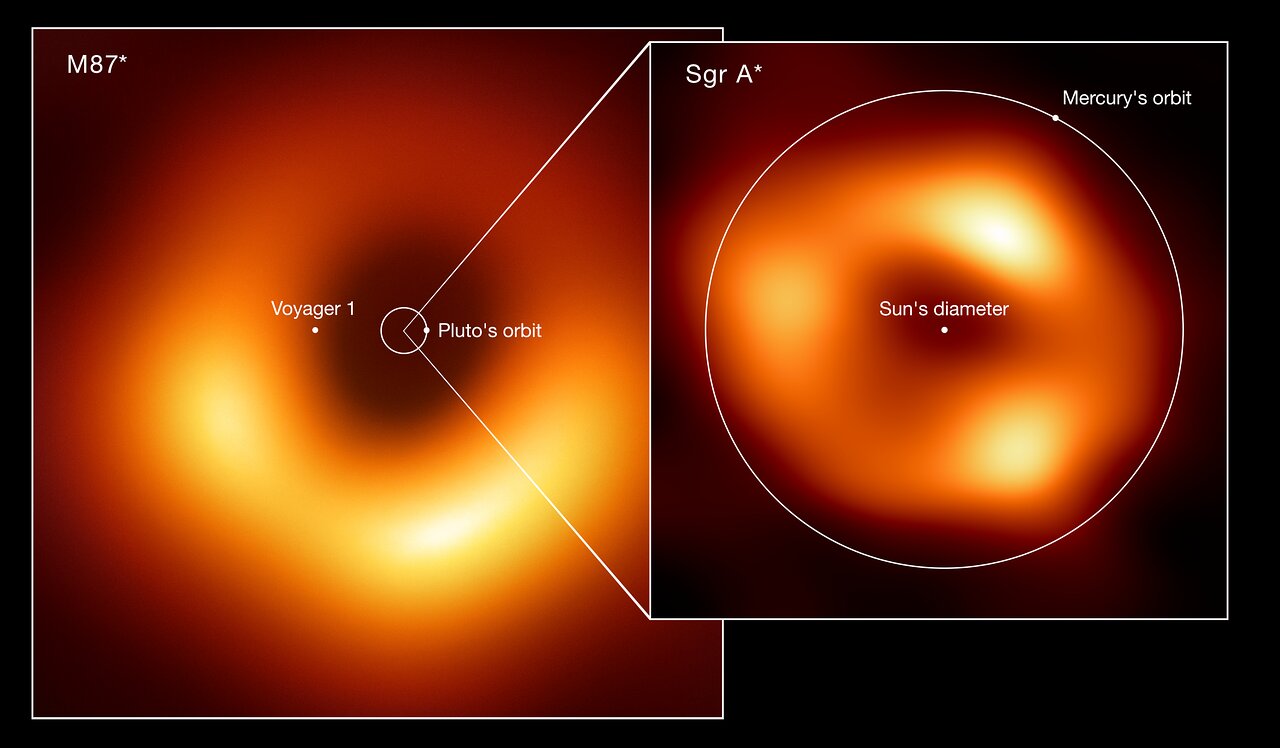The Sagitarrius A* Black Hole
By Dr. Becky Smethurst Watch original video
How was it photographed?
Sgr A* is pretty big—much larger than the Sun even—but since it is so far away, it appears extremely tiny in the night sky. In fact, it is so far away that even our biggest telescopes only see a blurry smudge. Turns out, to actually see the shape of the black hole, you need a telescope as big as the Earth.
And then scientists actually went and built one… kind of! The Event Horizon Telescope is actually a network of telescopes around the world that worked together to capture the light emitted by the superheated dust around Sgr A* (the dust, because black holes themselves absorb all light). By combining their data, the network is effectively the same as having a single giant telescope big enough to see the black hole.
Why is the black hole a donut?
Black holes are so massive and dense that if light gets too close, it cannot escape. As a result, black holes do not emit nor reflect light: they are completely black against the background of space.
Light around the black hole, though, can still escape and make it to our telescopes. What we see in the image is the light generated by dust orbiting and falling into the black hole. The black hole’s gravity accelerates the dust to extremely high speeds, superheating it and causing it to glow.
The black part in the center is the actual shadow of the black hole. Since light cannot escape, we expect it to be black.
What are the three blobs?
A bright blob in the image corresponds to a hot spot, or a spot where we observe more light. We actually expect this because of the way the dust orbits the black hole.
The dust orbits extremely quickly. As it does, on one side of the black hole, the dust is moving toward us, and on the other side it moves away. The dust moving toward us will appear brighter, due to an effect called relativistic beaming.
The M87* has one bright spot and one dim spot, which makes sense given the above description. So why does Sgr A* have three bright spots?
Sgr A* is about 1000 times smaller than M87*. As a result, the material orbiting Sgr A* takes much less time to go all the way around it than it would around M87*, on the order of minutes in fact. Unfortunately, Sgr A* is so far away that by the time its light makes it to Earth, it is extremely dim. In order to collect enough light, the Event Horizon Telescope had to stare at it for many consecutive hours.
Therefore, the dust would have had time to make potentially several orbits around the black hole during the observation period. What we see is the average of where most of the dust was at the time of the photograph. The brightest spot is where the dust is moving toward us, brightened by the aforementioned relativistic beaming; the other spots are where there happened to be clumps of heated dust during the photograph.
What does it teach us?
This photograph of Sgr A* is yet again evidence supporting Einstein’s theory of general relativity: all the data collected agrees with Einstein’s math.
Additionally, the data helps establish the angle that the black hole rotates, and it is interestingly not aligned with the galaxy’s spiral disk. That speaks to the possible history of our galaxy, as a misaligned black hole suggests that likely merged with other black holes in its past, each merger altering its angle of rotation.
